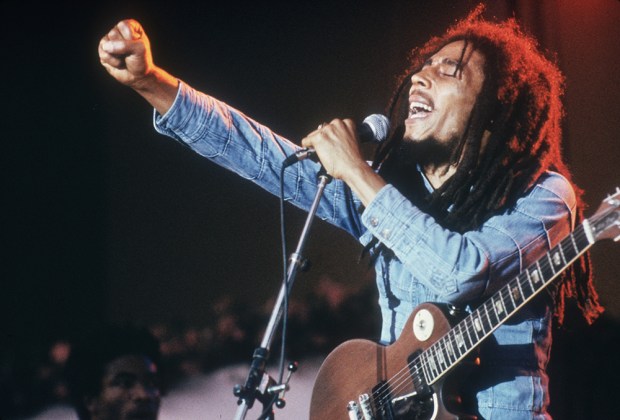Oh, the horror!
Sir: I think the enthusiasm of Dean Bertram for genre horror and sci-fi films (‘Terror Australis,’ 15 February) which, he claims with delight, are now ‘42 per cent of all Australian feature films made between July 2010 and June 2012’ is blinding him to the achievements, and popularity, of the many Australian films not in this ‘exciting genre’.
I am sure that Wolf Creek 2 is skilfully done in the outback horror tradition, but to acclaim the original Wolf Creek a ‘masterpiece’ is overdoing the praise. It is undeniably well made, but the only truly great Australian director in the genre so much admired by Dean Bertram is George Miller, of the Mad Max series. There are as many flops in the blood-and-gore-girls-rushing-through-the-bush-in-their-underwear genre as the ‘snooze-fest’ films that Dean so denigrates. Is he unaware of the commercial success of films such snooze-fest triumphs as Picnic at Hanging Rock, Jimmy Blacksmith, Samson and Delilah and Mao’s Last Dancer, to name just a few?
I think that Dean is almost alone if looking forward to the ‘promising’ Drive Hard, The Babadook(!), Predestination and John Doe: Vigilante, though the genre film I really can’t wait to see is the one Dean directed himself — Sick Day. Shot in 2008, it is still being edited. Five years of post-production should really give us something special.
Bruce Beresford
Balmain, NSW
Nuclear reaction
Sir: Peter Atherton questions whether a new nuclear power station at Hinkley Point is a fair deal for the UK (‘Nuclear fallout’, 22 February). However, his conclusion is based on some unvalidated assumptions. In May 2012, he wrote that EDF would need £166 for each megawatt hour of electricity produced to get a ‘realistic return’. Now he says that an agreed price of £92.50 offers rewards which are ‘eyewateringly attractive’.
Neither claim is justified. It is a balanced deal which will unlock £16 billion of investment at the lowest possible cost for consumers. He claims returns to investors of up to 35 per cent. As reported last October, target project returns are 10 per cent and, with borrowing, equity investors may achieve closer to 15 per cent. These investors will take the risk of delivering the project on budget and also face risks on the performance of the station when built. There are in-built mechanisms to reduce the customer price if higher returns prove achievable.
Hinkley Point C will deliver secure, reliable power, meeting 7 per cent of Britain’s electricity needs. It will be ready just as existing low-carbon nuclear stations are coming to the end of their lives. It will provide a massive boost to the economy and the British nuclear industry. For consumers and industry, it saves money in comparison to other forms of low-carbon energy.
And is inflation-linking really so strange for a deal lasting until 2058? A pint of beer cost the equivalent of ten pence 45 years ago. No one expects to pay that today.
Paul Spence
Director of Strategy & Corporate Affairs
EDF Energy
Even the fish are drowning
Sir: Well done, Melissa Kite, for her very entertaining piece on how the flooding of my county of Somerset has been made infinitely worse by a policy designed to put the interests of wildlife above those of people (‘Really wild excuses’, 22 February). But it is not right to suggest that if the intention has been ‘to make birds happy’ then this strategy has been ‘a huge success’. The 65 square miles of ‘designer flooding’ now covering much of our county have been even more of a disaster for wildlife than for people, since their victims include ground-feeding and ground-nesting birds, not to mention great numbers of badgers, hedgehogs, water voles and even fish, killed off by the de-oxygenated water of deliberately undredged rivers.
Christopher Booker
Litton, Somerset
Opera needs us
Sir: Doing good work without embarrassment keeps our existing audiences loyal as well as attracting new, younger people to opera. Far from ‘drifting away’ (Arts, 22 February), audience numbers at ENO are growing, with box office higher than at any time in the last three years.
Michael Henderson obviously missed Madam Butterfly (our highest grossing show ever) and The Magic Flute (standing room only on several nights), but there’s still time for him to catch our Peter Grimes and Rigoletto or to join us for any of the five new productions coming up. Our patrons know that 85 per cent of the talent on our stage is British or British-trained and that they’ll see international stars in the making.
What is ENO for? Ensuring that opera remains a living, growing art form, and keeping it affordable and enjoyable. Our productions will continue to be in demand around the world and our orchestra and chorus will continue to thrive under Ed Gardner and Mark Wigglesworth. We will do all of this without embarrassment.
John BerryArtistic director, ENO, London WC2
Hymn to hymns
Sir: I can assure Damian Thompson (Arts, 15 February) that public schools are not just going through the motions when it comes to hymns — if he doesn’t believe me, I can send him a copy of the CD of hymns we recently recorded at Radley. Admittedly it’s more Cardiff Arms Park than Canterbury Cathedral, but hymn singing is alive and well. Oh, and the music for ‘Dear Lord and Father’ wasn’t written as a hymn — it’s a chorus from Parry’s oratorio Judith, later turned into a hymn tune. In fact, none of the commonly sung hymns by Parry was written as such — ‘Jerusalem’ is a song, and ‘O praise ye the Lord’ is adapted from the last chorus of one of his anthems.
Timothy Morris
Radley College, Abingdon
A Tube map of history
Sir: Charles Moore (Notes, 22 February) gives a wonderful list of historically resonant Paris Metro stops, and adds that London’s stations ‘have a less grandiose story to tell’. Perhaps so, but it’s a story that features the dissolution of the monasteries (Covent Garden, Blackfriars), the Great Fire (Monument), the Napoleonic wars (Waterloo, Marble Arch), the Great Exhibition (Crystal Palace), and the British empire (East India). Include buses, and you can have the Roman empire too: the 76 has a stop called Temple of Mithras.
Robin Peters
London SE15
The mess opinion
Sir: Sinclair Dunnett (Letters, 22 February) asked if the Scottish fatalities in the Great War were proportionately higher because the Scots were ‘poorer soldiers’. In Goodbye to All That Robert Graves reported the views of the officers’ mess on the relative merits of the fighting men of the British Isles. ‘The mess agreed dispassionately that the most dependable British troops were midland county regiments, industrial Yorkshire and Lancashire troops, and Londoners. The Ulstermen, Lowland Scots, and Northern English ranked pretty high. The Catholic Irish and Highland Scots took unnecessary risks in trenches and had unnecessary casualties; and in battle, though they usually reached their objective, too often lost it in the counter attack; without officers they became useless. English southern county regiments varied from good to very bad.’ Graves does confirm that whatever the answer, it is not simple.
Andrew Sharpe
Epsom, Surrey
Got something to add? Join the discussion and comment below.
Get 10 issues for just $10
Subscribe to The Spectator Australia today for the next 10 magazine issues, plus full online access, for just $10.
You might disagree with half of it, but you’ll enjoy reading all of it. Try your first month for free, then just $2 a week for the remainder of your first year.











Comments
Don't miss out
Join the conversation with other Spectator Australia readers. Subscribe to leave a comment.
SUBSCRIBEAlready a subscriber? Log in